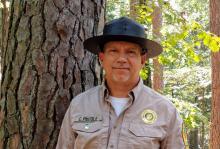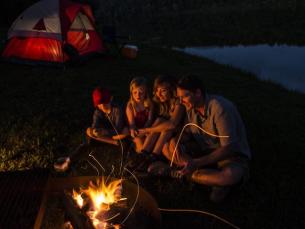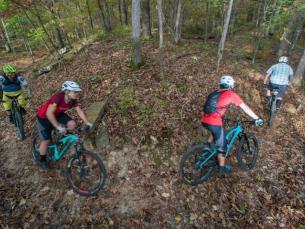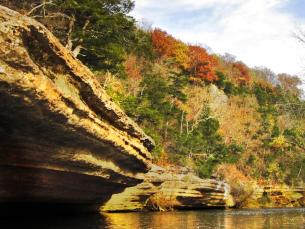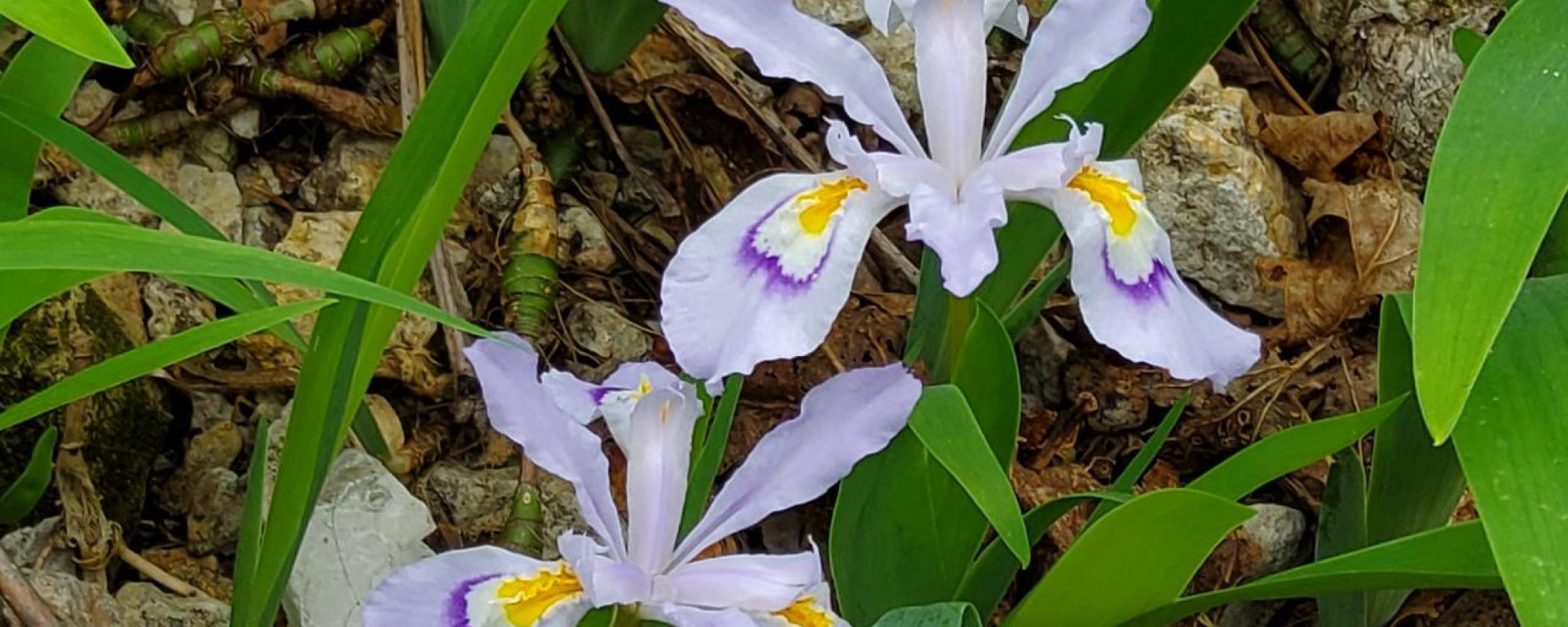
Don’t Miss the Joy of the Spring Wildflower Explosion
By: Chris PistoleRalph Waldo Emerson said, “the Earth laughs in flowers,” and we could all use a good laugh, now more than ever. But there’s more to wildflowers than just “a pretty face.”
Arkansas State Parks help preserve wildflowers which are not only beautiful for visitors to view and photograph but are essential to a healthy ecosystem and you can help protect them.
We hope you will find joy viewing some of our common wildflowers at Hobbs State Park-Conservation Area, but be sure to leave them for others to enjoy!
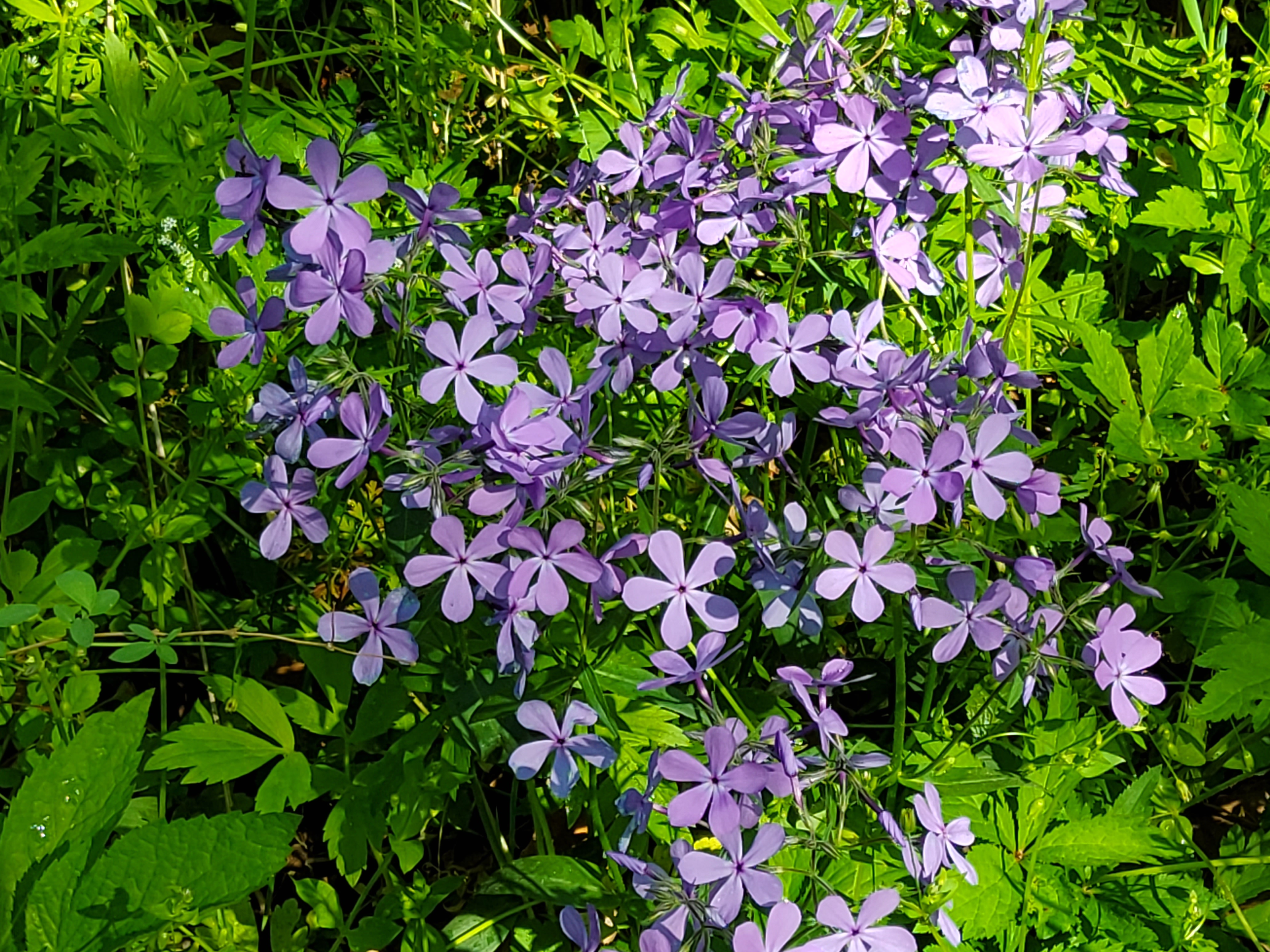
Blue Phlox: As nature awakens from its winter slumber, we welcome signs of spring like the sudden but fleeting explosion of blue phlox, also known as wild sweet William, and countless other native wildflowers blooming throughout Hobbs State Park-Conservation Area. Butterflies, bees, and hummingbirds relish its nectar.
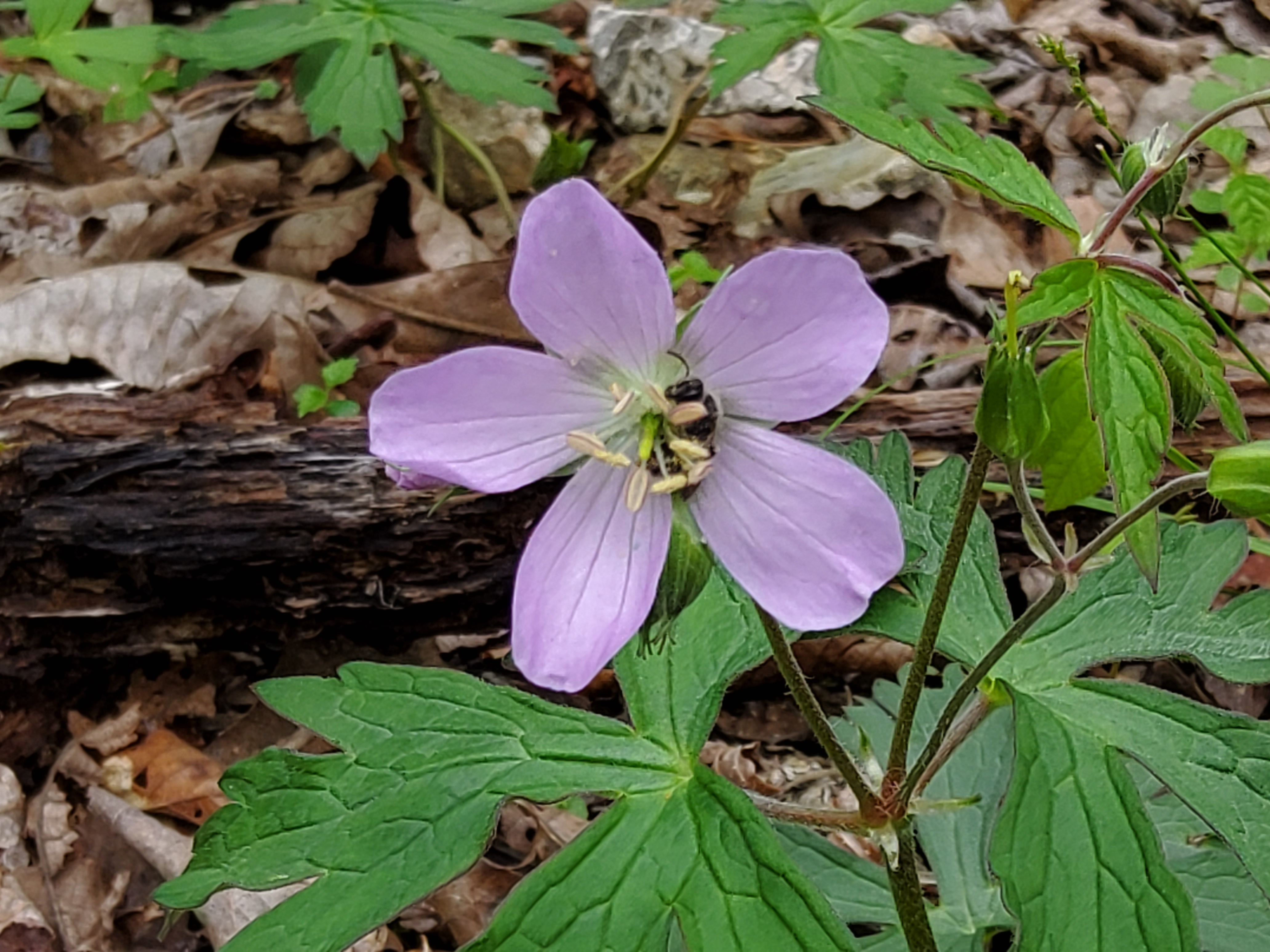
Wild Geranium: Notice the small, native, solitary bee (different from the European honeybee) gathering nectar from this wild geranium. Plants with colorful and/or scented flowers are advertising the availability of nectar to animals, mainly insects, that they need to pollinate their flowers.
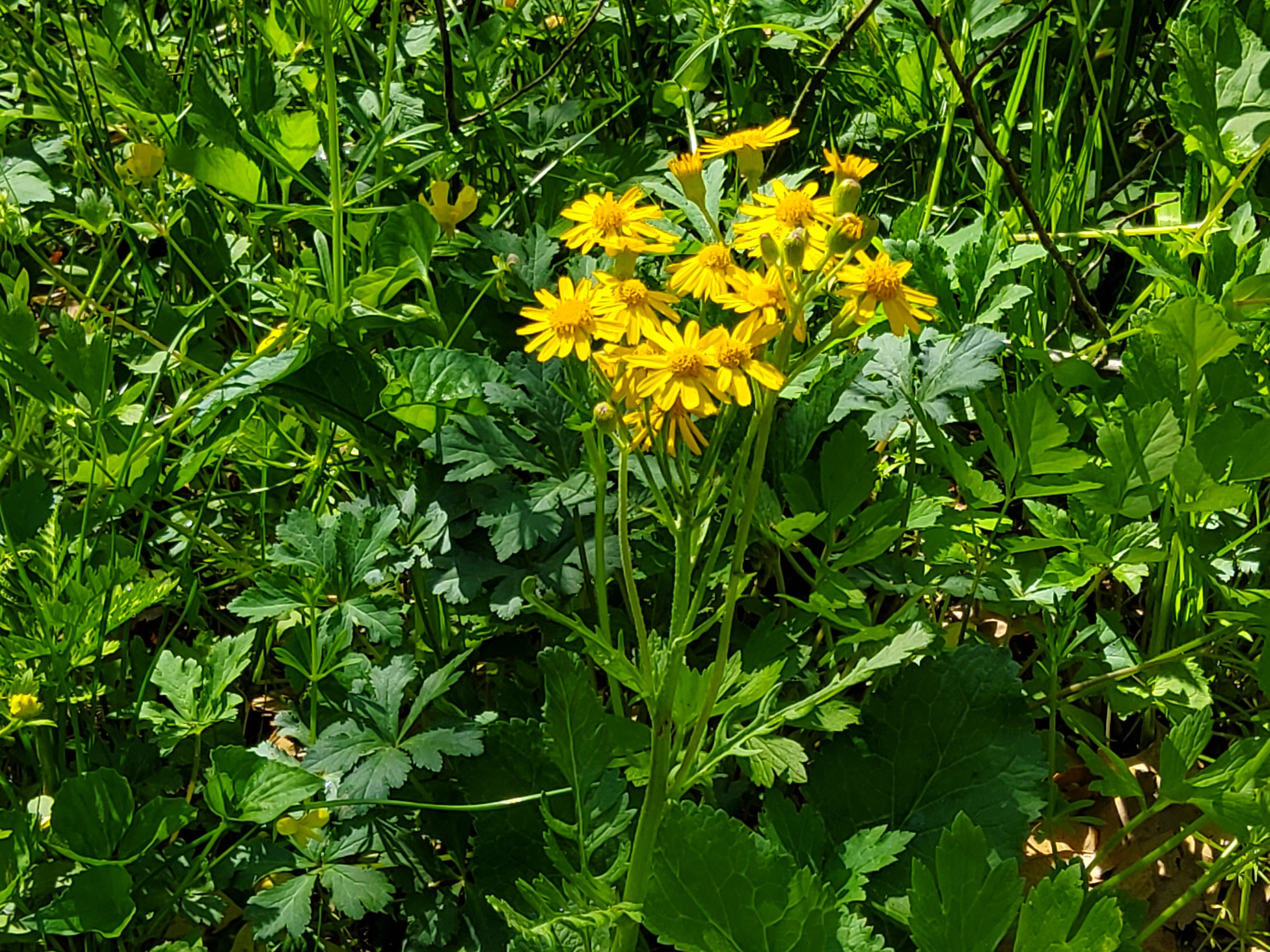
Golden Ragwort: What’s in a name? Common names of plants are often very descriptive of their appearance or of a use people in the past had for them. It is presumed that the raggedy appearance of the ragwort flowers that have gone to seed is how this plant got its name.
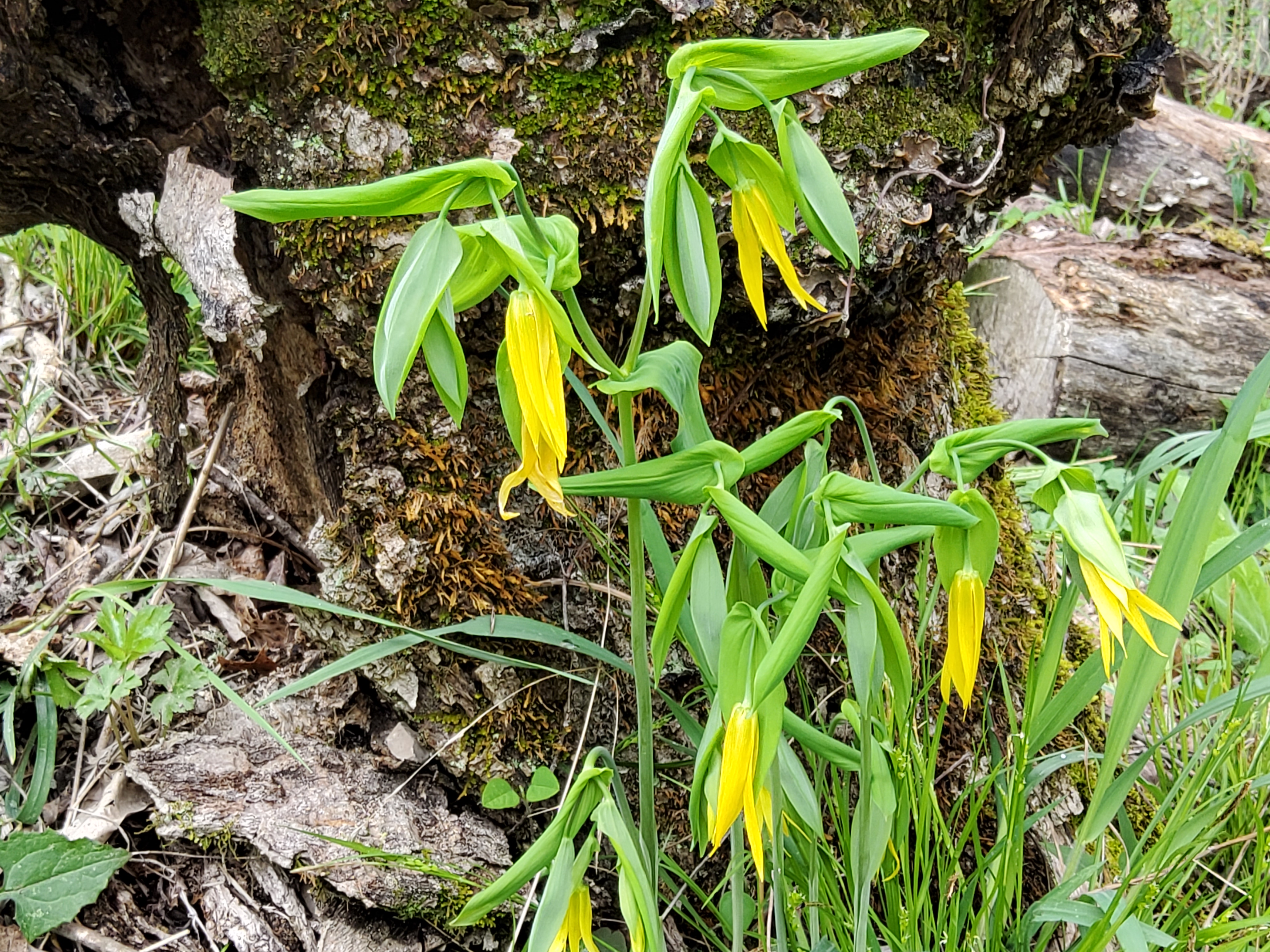
Large-Flowered Bellwort: Some beauties of the forest appear to be shy or maybe just thirsty, like this large-flowered bellwort! Actually, this perfectly healthy plant is just showing us its normal, droopy pose.
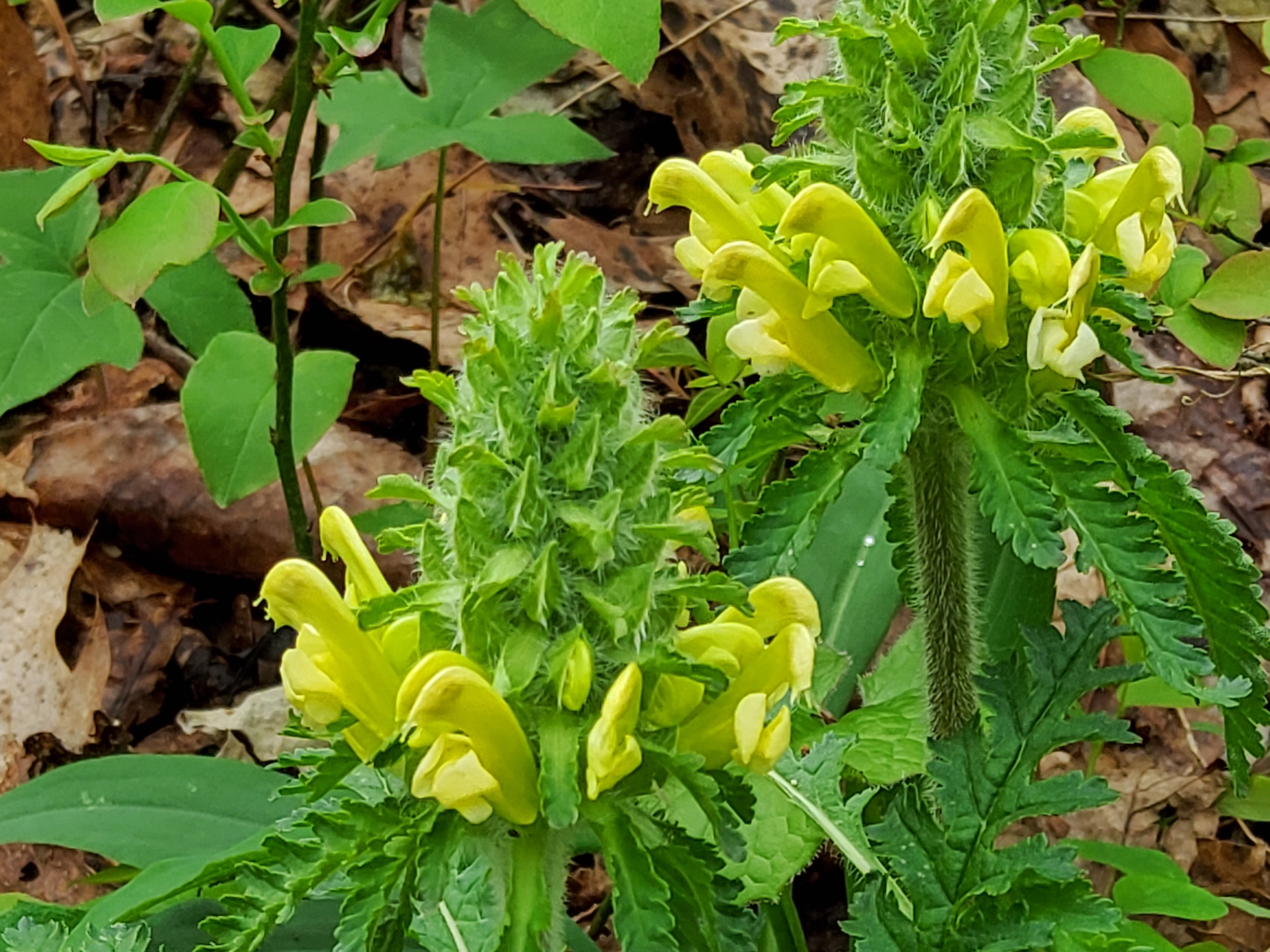
Wood Betony: The beautiful and unique wood betony is also known as lousewort, which stems from an old belief that livestock grazing near these flowers would become infested with lice. As you hike the trails at Hobbs State Park-Conservation Area, you might see large stands of this plant covering the ground, unlike many wildflowers that are more scattered.
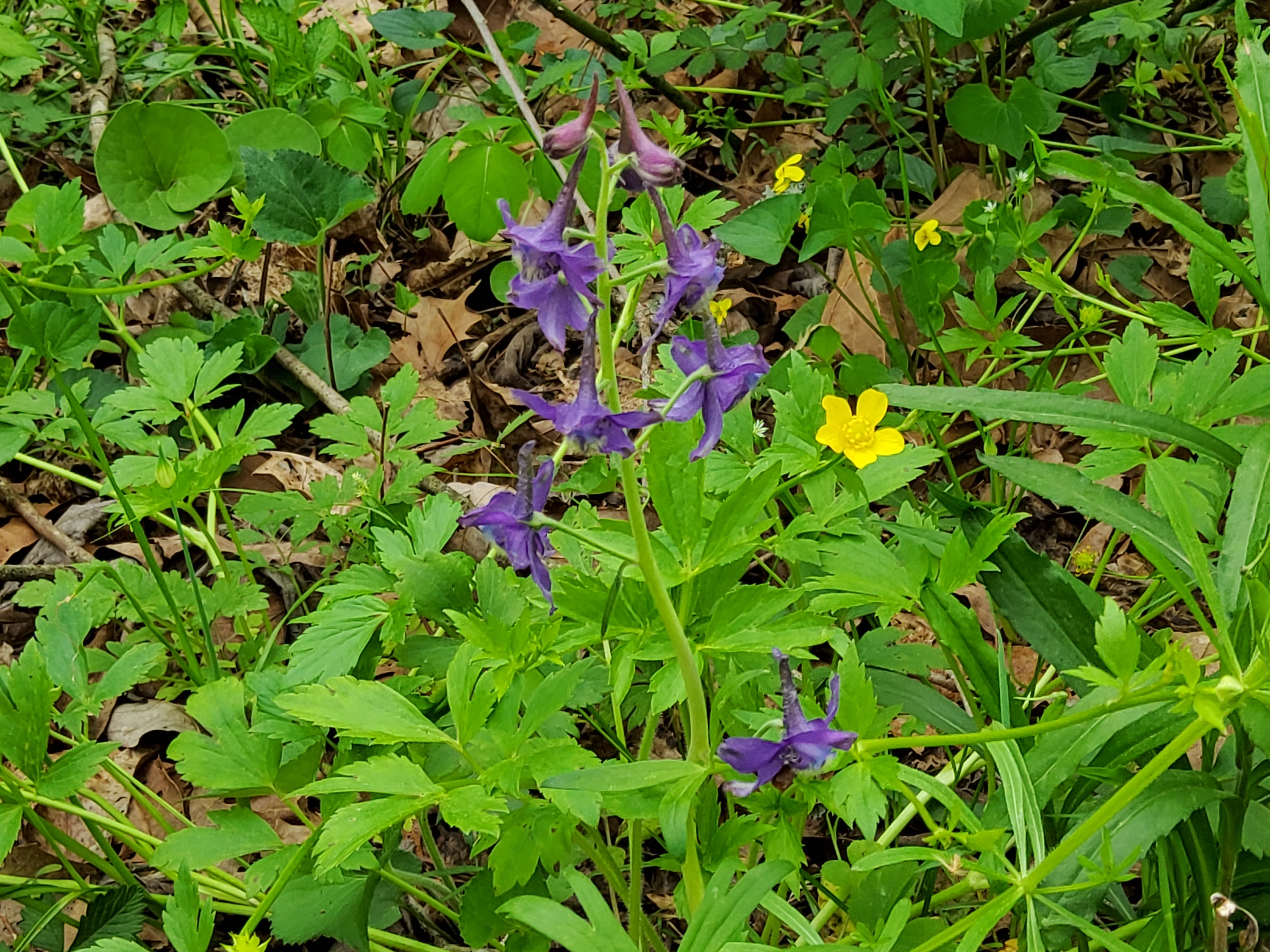
Dwarf Larkspur: Notice the spur, like on a rooster’s leg, sticking off the back side of this flower. Only certain insect pollinators can reach the nectar stored in the spur, and in the process, they transfer the pollen. Some insects that were excluded have instead learned to pierce the spur to steal the nectar. Nature is certainly a fascinating battle of survival!
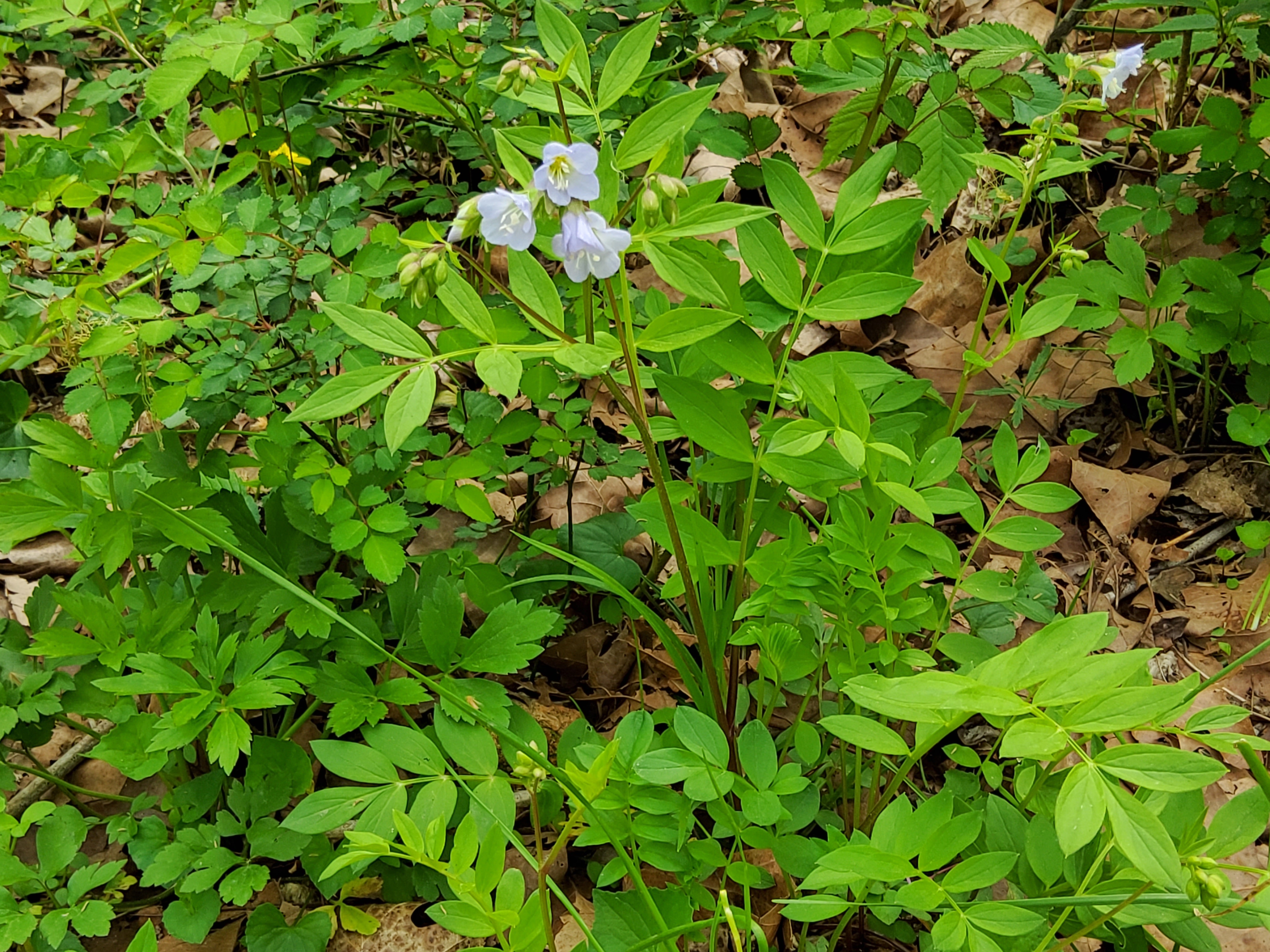
Jacob’s Ladder: The subtle, pale blue flowers of the Jacob’s ladder are accompanied by leaves with paired sets of leaflets opposite one another, which resemble the rungs of a ladder, leading to its common name.
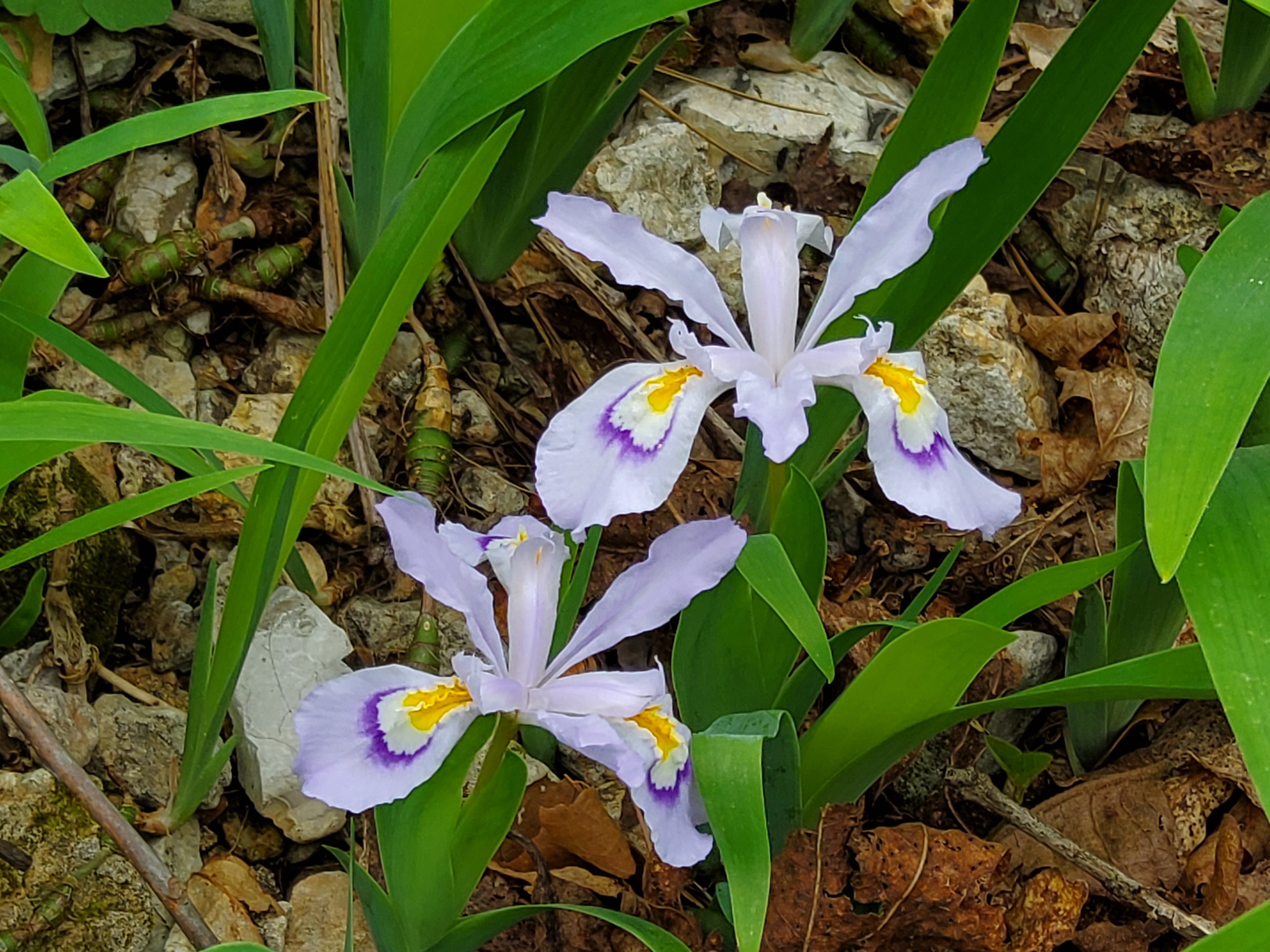
Dwarf Crested Iris: Do you have any iris at home in your garden? Did you know they share a past with this and other wild iris? You can see many similarities, except for size. This wildflower may only grow up to eight inches tall.
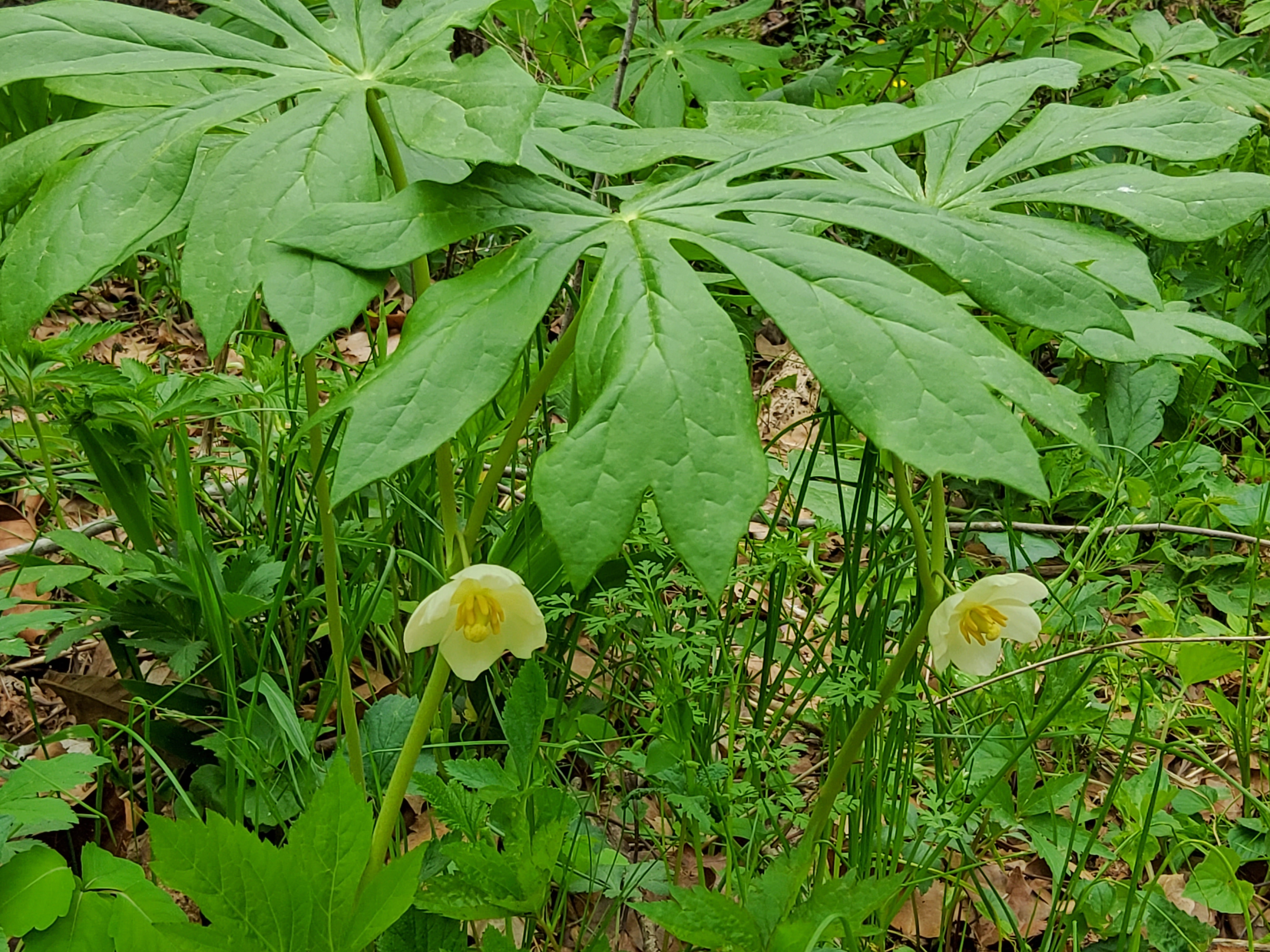
Mayapple: While viewing wildflowers, it is natural that the colorful flowers grab our attention, but don’t forget to observe and appreciate the diversity of leaves found on the plant. The mayapple has large, umbrella-shaped leaves resembling miniature palm trees. Hiding under the leaves of mayapples with forked stems are white flowers which eventually form yellow fruits resembling apples when ripe.
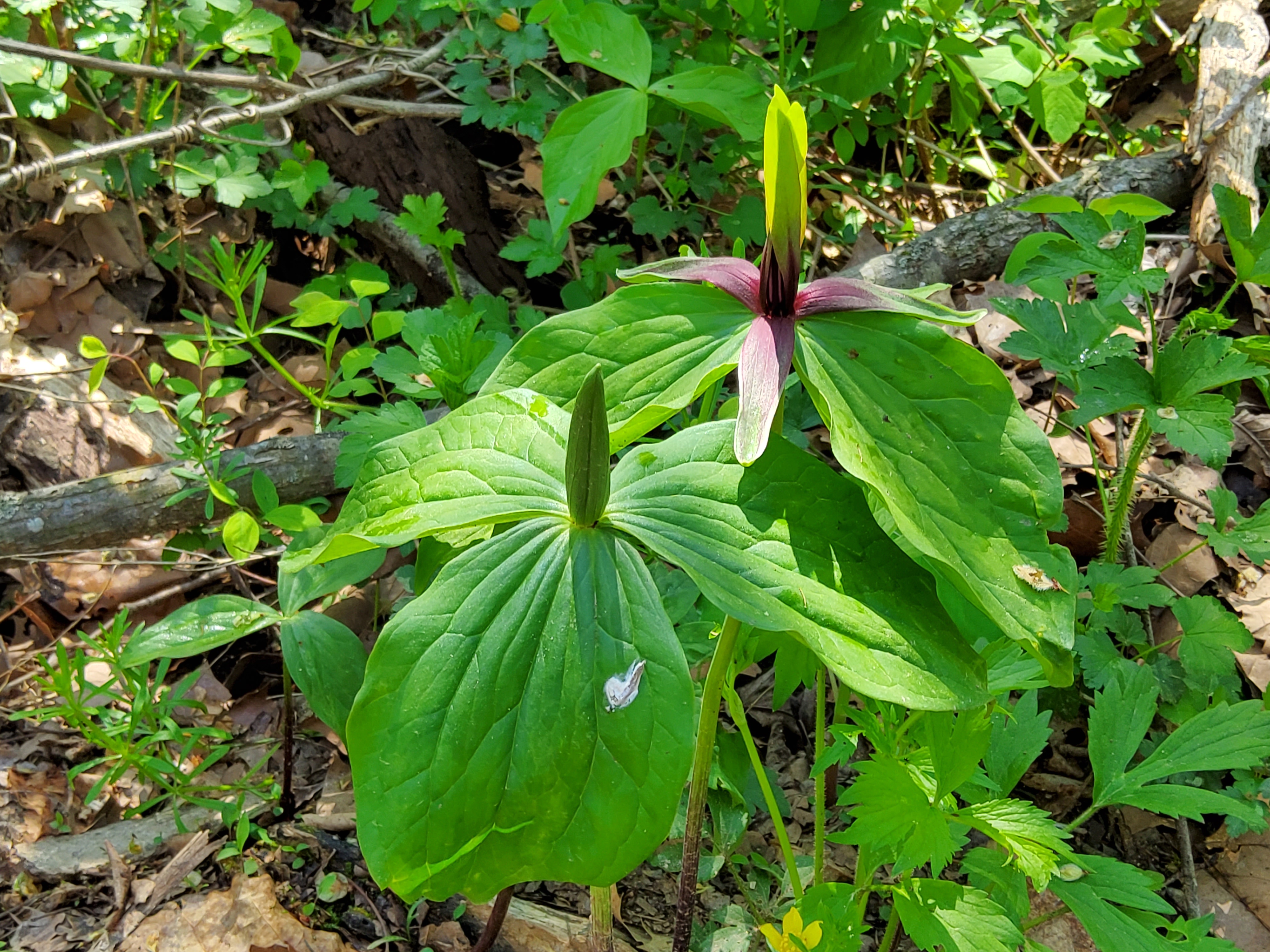
Green Trillium: Another wildflower with prominent leaves is the green trillium, a member of the lily family. The word trillium originates from the Latin word for three. Can you tell why this was so named?
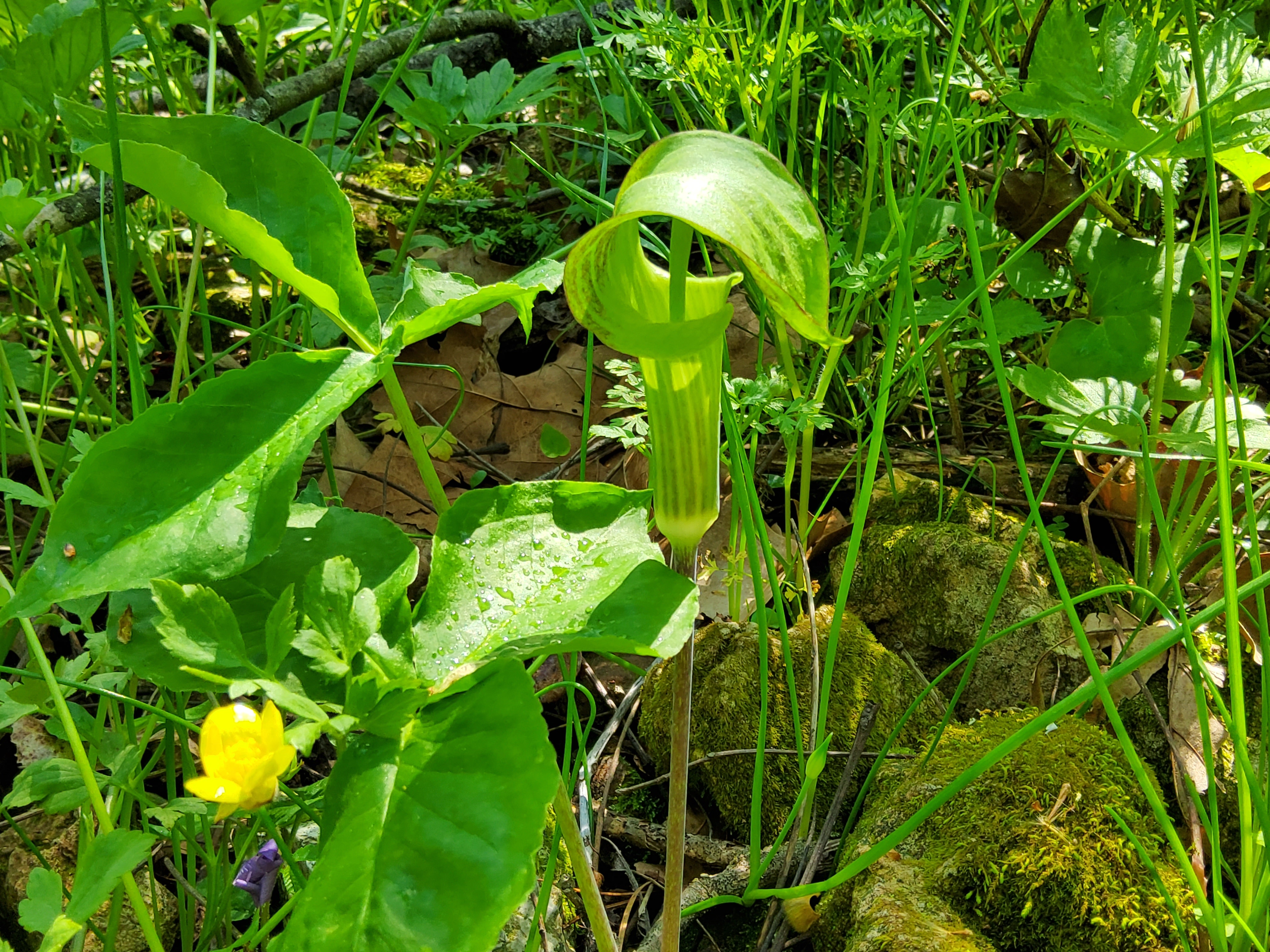
Jack-in-the-Pulpit: Try to view the spring wildflower show, including the unique jack-in-the-pulpit, while you can. The forest wildflowers take advantage of the much-needed sunlight before the canopy of the forest closes in with the quickly growing tree leaves as summer comes. Once that happens, the number of wildflowers blooming in a forest greatly decreases.
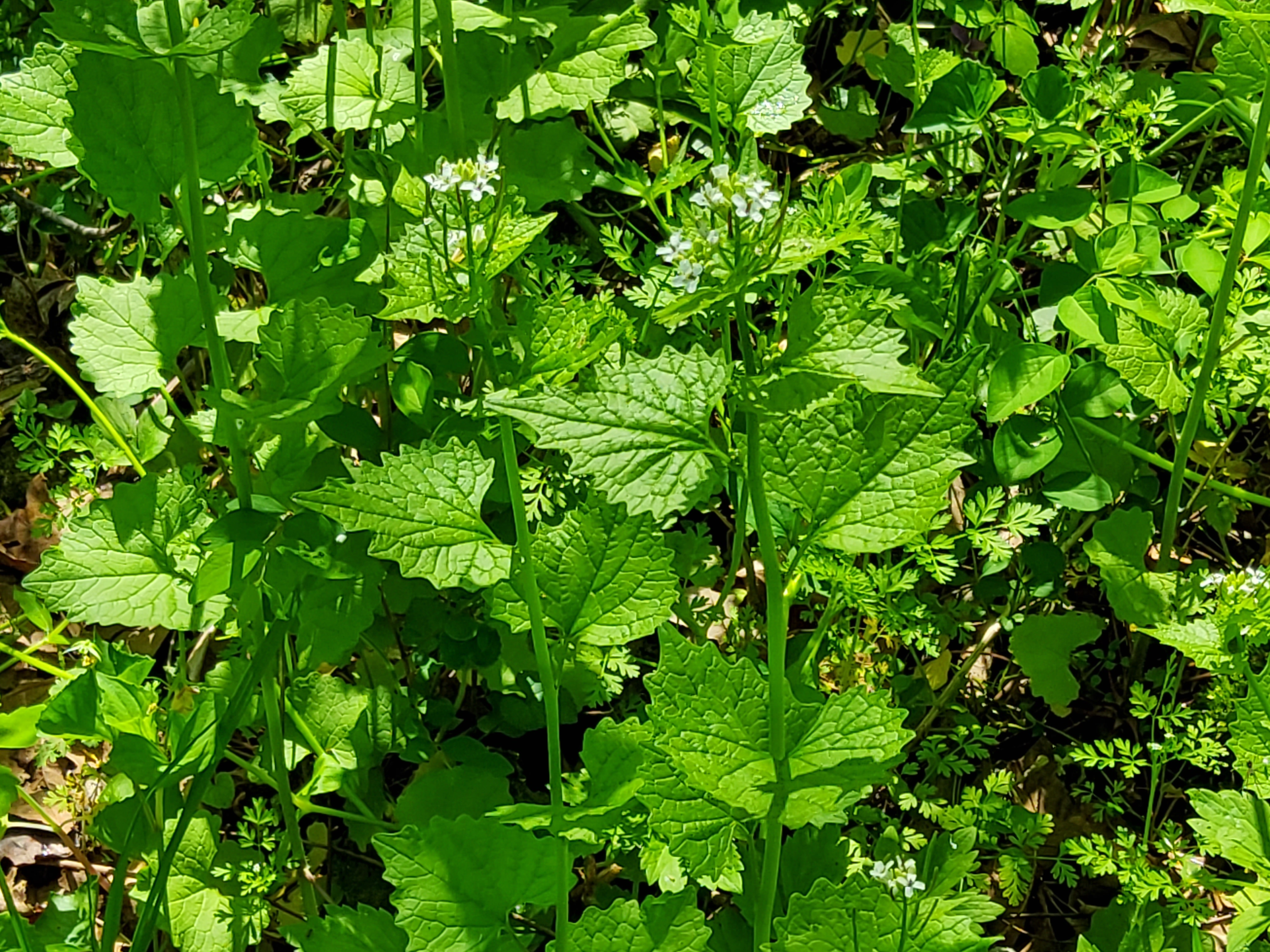
Garlic Mustard: Another threat to the diversity of native wildflowers is the introduction of invasive plants from other regions, like this garlic mustard. It can quickly spread and deprive native plants of the sun, water, and nutrients they need. Before adding new plants to your landscape, check the following list to make sure they aren’t considered invasive species, and remove any that are invasive.
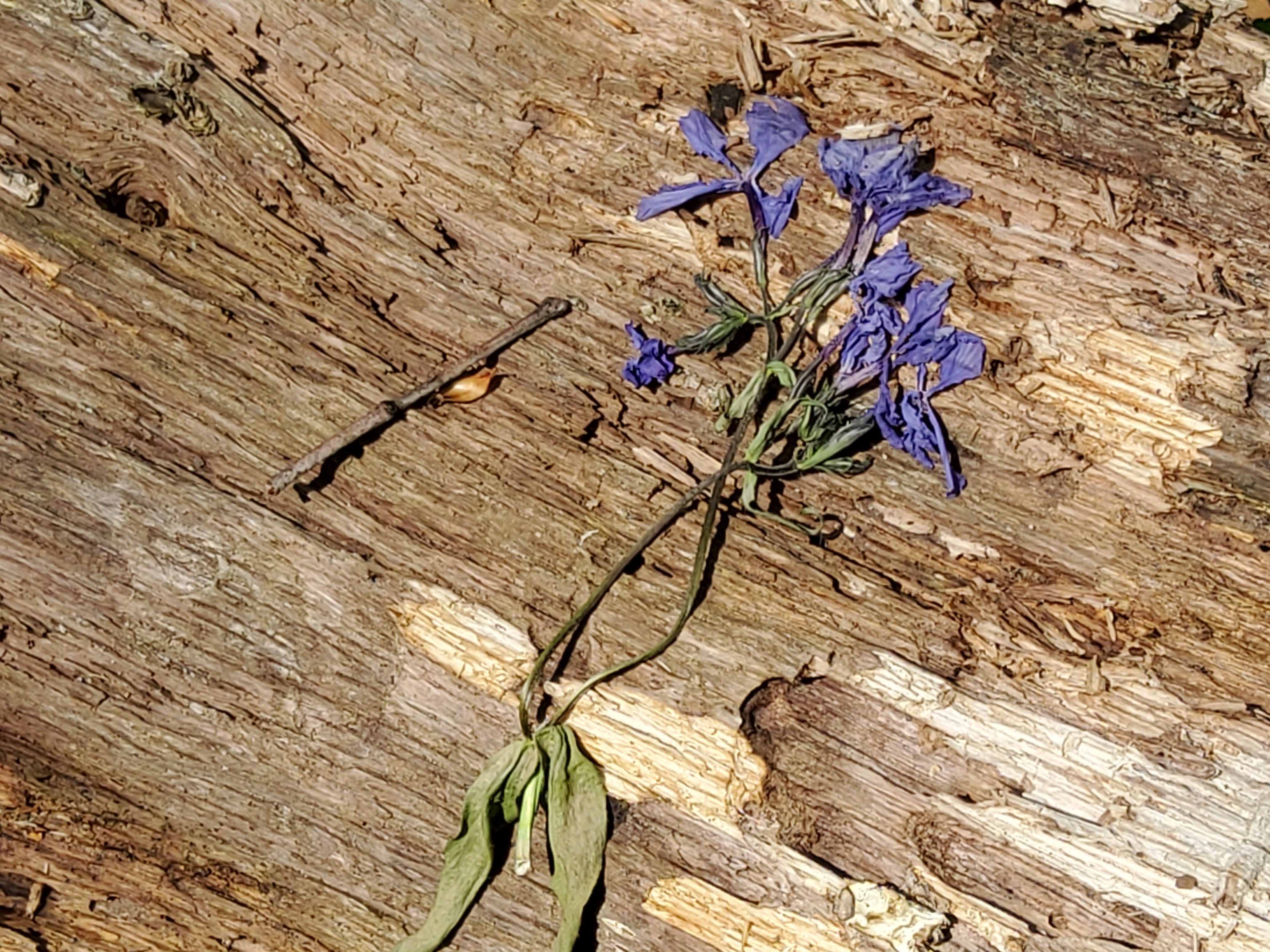
Blue Phlox Picked and Discarded on Log: Even though we’ve probably all been guilty of picking wildflowers in our lifetimes, the truth is that if everyone picked just a few they could eventually disappear from that area. Here at the park we regularly see evidence, like these discarded blue phlox flowers, that some of our visitors are picking the flowers, which is illegal on all state park property.
You can help us make a difference and protect the diversity of wildflowers in our parks by teaching your family to practice good outdoor ethics – a part of the Leave No Trace philosophy. Most wildflowers wilt long before you get them home, but a photo will last forever. Sinking Stream Trail and Pigeon Roost Trail are two of the best areas at Hobbs State Park-Conservation Area to view wildflowers. You can also purchase native wildflowers at local nurseries and plant them in your yard to enjoy at home every year! The Arkansas Native Plant Society provides information on where you can purchase these plants.
Now go and safely enjoy the spring wildflower explosion!
